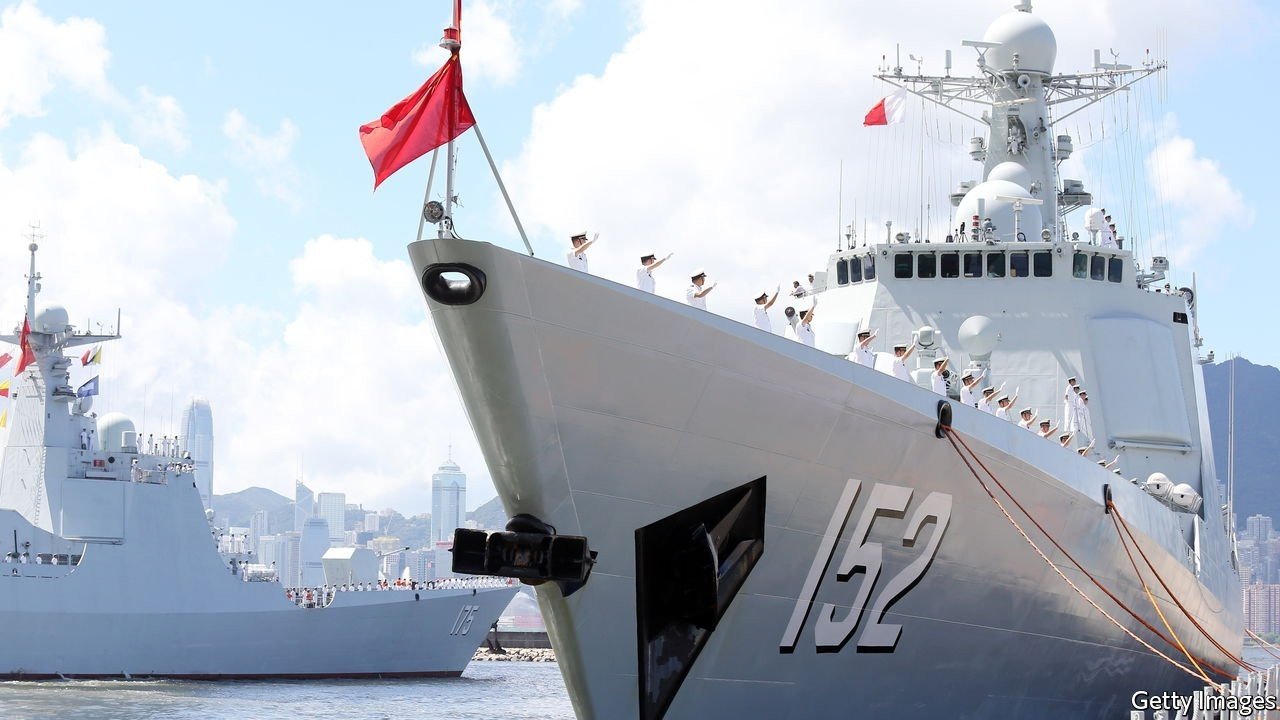The Long Game. By Rush Doshi. Oxford University Press; 432 pages; $27.95. To be published in Britain in September; £21.99
A S THE BIDEN administration crafts a plan for dealing with the rapid rise of an authoritarian, America-scorning China, its officials must answer two crucial questions: “What does China want?” and “What can it achieve?” Western analysts are divided. Some say that China wants a world in which the Communist Party can prosper and not feel threatened, but that it is not sure whether striving to surpass America is worth the risks. Others believe that China is intent on displacing America as the world’s pre-eminent power and is fast acquiring the means to do so.
Listen to this story Your browser does not support the
In a new book, “The Long Game”, Rush Doshi paints a particularly gloomy picture: China aims to achieve global supremacy by 2049, when the Communist Party hopes to celebrate 100 years in power. Mr Doshi is one of Mr Biden’s advisers on China policy in the National Security Council, having been a specialist in Chinese strategy at the Brookings Institution, a think-tank in Washington. His views carry weight.
Mr Doshi admits there is debate in the West not only over whether there is such a deadline, but also over whether China has a grand strategy. But he makes his own case powerfully, with reference to an impressive array of highly authoritative Chinese texts (although one of the most vivid descriptions of how this Chinese order might look—with America reduced to a “deindustrialised, English-speaking version of a Latin American republic, specialising in commodities, real estate, tourism and perhaps transnational tax evasion”—uses the words of an American scholar).
As Mr Doshi describes it, the crucible of China’s grand strategy was the “traumatic trifecta”: the Tiananmen Square protests of 1989, the first Gulf war of 1991 and, also that year, the collapse of the Soviet Union. These events convinced China that America posed the biggest threat ideologically, militarily and geopolitically. China responded by devising a plan to blunt American power. This was to be low-key: Deng Xiaoping, then retired as a party leader but still highly influential, suggested China should “hide its capabilities and bide its time”. The country focused on developing weapons that would keep America at bay and on joining multilateral organisations such as the World Trade Organisation, hoping to use these institutions’ rules to constrain America.
Then came the financial crisis of 2007-09. According to Mr Doshi, this meltdown convinced China that America was waning and that the time was ripe to start building China’s own power more actively. China began acquiring aircraft-carriers and, under Xi Jinping, who took over in 2012, creating regional institutions to establish a China-centred order. Mr Xi launched the Belt and Road Initiative to help China achieve the same goal globally.
A “new trifecta”—Donald Trump’s winning of the American presidential election of 2016, Britain’s withdrawal from the European Union and the West’s faltering response to the covid-19 pandemic—persuaded China that Western power was in irreversible decline. China decided that, given these and other “great changes unseen in a century”, world dominance could be achieved by 2049, argues Mr Doshi.
There is no conclusive evidence of this. The texts Mr Doshi cites provide only hints. But those who disagree with his analysis may still support his proposals for an American response. He calls for tactics similar to China’s, such as joining Chinese-led institutions in order (in this case) to try to improve them. He also says America should reinforce the attributes that have helped it to “attract the allies, immigrants and capital that underpin liberal order”, such as openness and the rule of law. That is surely the right conclusion, even though Western scholars will still disagree over China’s grand plans. ■
